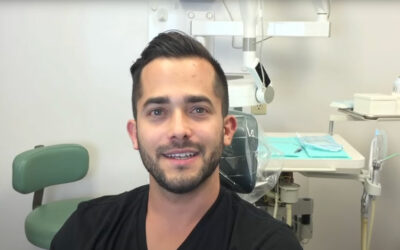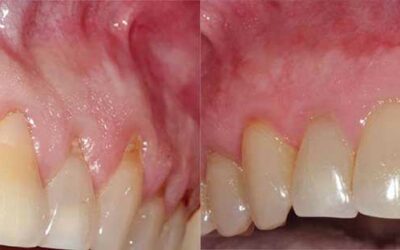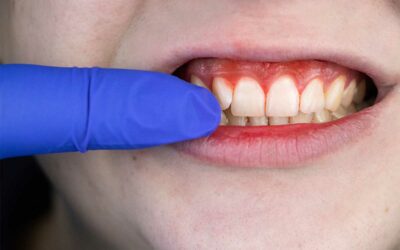5 Ways You’re Increasing Your Risk for Dry Socket
Overcrowding, cavities, trauma, gum disease, and impacted wisdom teeth are just some of the reasons that tooth extractions are an unfortunate but often necessary part of many dental visits. While the extraction procedure is typically very simple, the healing process can be daunting, especially for those who have heard about dry socket. While approximately five percent of patients develop dry socket after a tooth removal, it is important for patients to understand the risk factors and the best dry socket preventative measures available.
What is Alveolar Osteitis?
Better known as dry socket, alveolar osteitis (AO) is a painful condition the occurs when a blood clot fails to protect and heal the open socket left in the gums after a tooth is removed. In many cases, a blood clot simply may not form correctly or becomes dislodged when eating or drinking. Without the natural protection of a blood clot, the nerves and even the jawbone are exposed to air, food, and other factors that interfere with the healing process, resulting in the following dry socket symptoms:
- Swollen, inflamed gums
- Pain and extreme sensitivity
- A bad taste in the mouth
- Pain that radiates to other parts of the face or neck
- A bad odor
Wounds, such as the one created by wisdom tooth removal, are not as easy to heal as cuts to other parts of the body because the mouth is constantly wet with saliva, particularly the lower teeth, molars, and wisdom teeth. Therefore, it is crucial that patients carefully follow post-operative instructions in order to avoid developing AO.
Common Risk Factors for Dry Socket
While it is crucial for patients to follow their doctor’s recommendations after a tooth extraction, there are some factors that can put a patient more at risk of developing dry socket despite post-operative care. These factors include but are not limited to the following:
1. Smoking
Smokers are at a particularly higher risk of suffering dry socket after a tooth removal because the nicotine and other chemicals in cigarettes cause arteries and blood vessels to become narrow, reducing the body’s ability to supply healing oxygen and nutrients to a wound. Smokers often experience a slower recovery time as a result of the effects of nicotine and tobacco on the open wound. Additionally, the suction used to smoke a cigarette can dislodge a blood clot and cause AO.
2. Poor Oral Hygiene
Strong, healthy gums are simply better prepared to recover from a tooth extraction than gums that are weakened by bacteria, over-brushing, or using a hard toothbrush. Over time, bad dental hygiene can damage tooth enamel and gum tissue, resulting in a greater risk of infection, slower healing, and dry socket after a tooth removal.
3. Oral Contraceptives
Women, especially those taking oral contraceptives, typically have a higher risk of developing the condition than men. According to research, this difference can be attributed to the hormone estrogen, which has been found to interfere with the blood clotting process. Women who are taking birth control experience an increased fluctuation of estrogen during certain weeks of the month, resulting in a roughly 30% increased risk that a blood clot will not form correctly after a tooth extraction. Some sources suggest that women are less at risk during days 23 to 28 of their menstrual cycle.
4. Medications
Before any type of operation, it is important for patients to tell their doctor which medications they are currently taking in order to avoid potential complications. For example, certain medications, such as blood thinners, can prevent the body from forming blood clots after a tooth extraction, which will not only slow the healing process, but also increase the chances of suffering dry socket as a result. Informing the doctor or surgeon beforehand allows both parties to make the necessary arrangements to protect the patient.
5. Gum Disease
Existing infections, such as gingivitis, gum disease, and periodontal disease can significantly impact the body’s ability to heal after a wisdom tooth removal or other surgery. The bacteria that causes gum disease has been linked to a variety of health concerns, including putting a remarkable strain on the immune system. A weakened immune system may not be able to produce a viable blood clot after a tooth extraction, resulting in a painful AO. Additionally, the harmful bacteria that causes gum disease can cause the open socket to become infected, leading to further painful complications.
Is There a Cure?
The CENTER for Advanced Periodontal and Implant Therapy offers a cutting edge dry socket prevention that utilizes regenerative medicine and achieves amazing results. The NoDrySocket prevention is one of the best options for easing the pain and discomfort of AO as soon as possible. NoDrySocket involves taking a small sample of a patient’s blood and placing it in a centrifuge in order to separate the healing platelets and plasma cells from the red blood cells. The resulting advanced platelet-rich fibrin is placed in the socket and functions exactly like a blood clot, encouraging the tissue to heal. The NoDrySocket system can be performed immediately following a tooth removal to ensure that even patients with a high risk of tooth extraction complications do not experience the painful condition.
Learn more about dry sockets at WebMD.com.
Contact the Periodontal Specialists in Brentwood Today!
If you are concerned about AO, do not wait to schedule a thorough screening at the CENTER for Advanced Periodontal and Implant Therapy in LA. Dr. Alexandre-Amir Aalam and Dr. Alina Krivitsky have extensive training and experience helping patients achieve stronger, healthier gums. Call us at (310) 826-8242 today!
You May Also Like...
Stem Cells Tissue Regeneration: An Alternative to Classic Gum Graft
Gum recession is a common dental problem that affects millions of people worldwide. This condition occurs when the...
Gum Surgery Can Enhance Your Smile And Rescue Your Teeth
Are uneven gums or exposed tooth roots interfering with your smile's appearance? Do your teeth seem uneven or lopsided...
What are the Stages of Periodontal Disease?
Periodontal disease (gum disease) is one of the leading causes of tooth loss in Los Angeles. Fortunately, recognizing...



